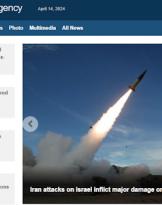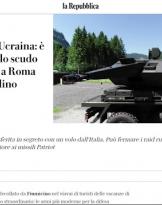The day after the fall of the fascist regime (25 July 1943). the Royal Army deploys on the national territory 20 infantry divisions (The divisions LIVORNO, NAPOLI, AOSTA and ASSIETTA are blocked in Sicily following the landing of the Allies on July 10), 4 alpine, 2 battleships, a motorized, one of paratroopers, besides to 18 divisions used for coastal defense. The LUPI DI TOSCANA, RE and LEGNANO divisions are returning from France and Croatia.
All together they form a force of 500.000 men and, at the establishment of the Badoglio government, they have to face the 10ᵃ German Army of Field Marshal Kesselring, composed of 8 divisions whose most efficient - the 15ᵃ and the 29ᵃ Panzergrenadier, the GOERING equipped with carts heavy and the Fallschirmjäger - are busy in Sicily.
In the rest of the peninsula the 90ᵃ Panzergrenadier is located in Sardinia, the 3ᵃ in Tuscany, the 6ᵃ in Campania and the 26ᵃ in Puglia.
The numerical disparity in favor of the Royal Army is enormous, in addition, the departments belonging to the Carabinieri and the Guardia di Finanza must also be added.
The Regia Marina, despite the showers suffered in the Mediterranean, is still very powerful, and the Regia Aeronautica itself still has enough aircraft to effectively combat the Luftwaffe flight departments located in Italy.
In the hectic hours following Mussolini's fall, none of the country's ruling class - the King, Badoglio, the Chief of Staff Ambrosio - has the courage to take the initiative: close the borders, declare the armistice unilaterally and disarm the Kesselring Army. No one realizes that the homeland is in agony. Italy of opportunism comes out, Italy serves as two masters, which delegates its salvation to the foreigner.
 An Italy perfectly embodied in Vittorio Emanuele III who in the 1922 gave the task of forming a government to Mussolini, who in the 1938 signed the racial laws, which in the 1940 signed the declaration of war to France and England (between the other in London there were his huge bank deposits that helped support the American initiative Lend and Lease in favor of the English).
An Italy perfectly embodied in Vittorio Emanuele III who in the 1922 gave the task of forming a government to Mussolini, who in the 1938 signed the racial laws, which in the 1940 signed the declaration of war to France and England (between the other in London there were his huge bank deposits that helped support the American initiative Lend and Lease in favor of the English).
With Fascism removed, Badoglio can devote himself to "negotiations" (actually one unconditional surrender) to reach an armistice with the Allies, despite in all their hotels an ancestral terror towards the possible German reaction. Meanwhile that of Badoglio is a real military dictatorship: the directives issued, in the matter of public order, are harsher than the fascist ones (Carlo Vallauri in his work Soldiers writes that in the first 45 days of Badoglio government there were more victims than in the 20 years of special fascist court), even the Italians who take to the streets to express their favor to the King's decision to oust Mussolini are shot.
The theater of absurdities begins: humiliating talks are established with the Allies, while the (albeit little) German ally is asked to send substantial reinforcements to Italy to defend it from invaders. Badoglio, the strategist, believes he has deceived the Bolsters, demonstrating the firm intention of continuing the war alongside Berlin.
Thus large German forces flow through the Brenner for three weeks. The Wehrmacht departments occupy the main roads, railway stations and airports. Ambrosio assists powerless, the Germans are occupying the country but Badoglio is concerned to keep secret (but for some time aware of Berlin) the negotiations underway with the Allies, to then stab the old ally in the back.
In mid-August the occupation of the peninsula is now complete. The Germans have sent 17 divisions and 2 brigades from the Brenner to Calabria, the plan for the submission of Italy is called Alaric.

However, given the contrasts between Rommel and Kesselring regarding the operational deployment of the departments, there would still be room for maneuver. A decisive deployment of the Italian divisions in defense of Rome would have allowed the capital to be protected, the south to be free and perhaps to give another course to the war.
But in that month of August of the '43 the men who should have the task of directing the Nation do not move a finger, the only goal that animates them is to save their power (today we would say "the armchair"). In their view the Italian people were completely expendable.
The 2 September (the 3 day there will be the signing of the Armistice by Eisenhower and the envoy of the Castellano Government) Ambrosio branches out the sadly famous Conference proceedings 44 addressed to Army Corps commands: it is an apogee of ambiguity. The circular explains that the controls must provide for the defense of the passes on the north-western border, to free the north-eastern from hostile presences, to maintain the main maritime bases and to guarantee the communications of Sardinia and Corsica. There is no mention of the Germans. The effect is to generate further confusion among the military commands, throwing them into indecision, into the fear of taking individual initiatives.
At the proclamation of the Armistice, September 8, Ambrosio should issue the order to attack the Germans (he will do it three days later, safely in Brindisi along with the other leaders of the country, now under the protection of the VIII Montgomery Army) , but none is pronounced. Indeed, on that fateful day, Roatta's proposal to spread a note declaring the Germans to be enemies is rejected.
At this point Badoglio takes two initiatives: one more absurd than the other. He broadcasts the 24202 telex in radio in which he orders to alert the German commandos of the movements of Italian troops and to prohibit attacks against them. Every act of force by Italian departments must be aimed solely at self-defense.
The second is to make direct contact with Field Marshal Kesselring to complain about the behavior of German soldiers and to propose a kind of truce. Badoglio has only one thought: to save his skin by surrounding the old ally.
In those frantic days, there are hundreds of episodes in which Italian soldiers, in a gesture of pride, choose to fight, despite the ignominy of the leaders.
The only interest for those who fight is the Homeland, a homeland neither fascist nor anti-fascist. People die to defend their comrades, to defend the honor of Italy, thrown into the mud by the pettiness of a ruling class who thought only of their own advantage.
Photo: web / Bundesarchiv












